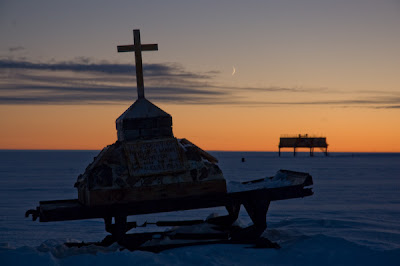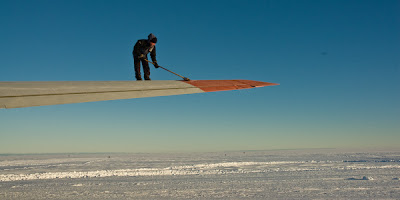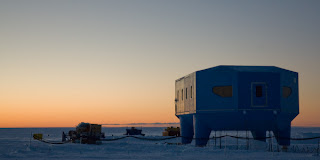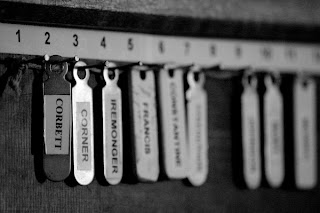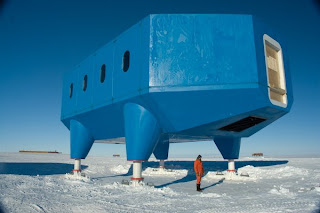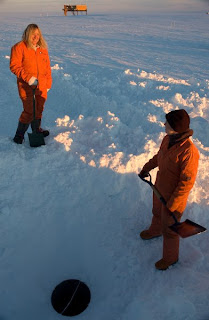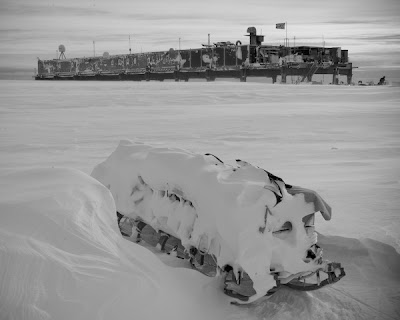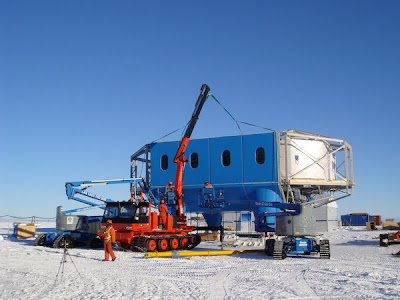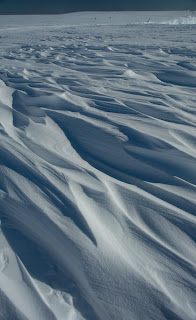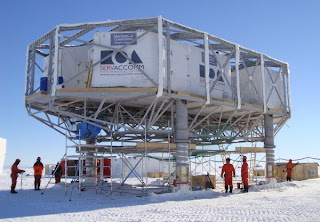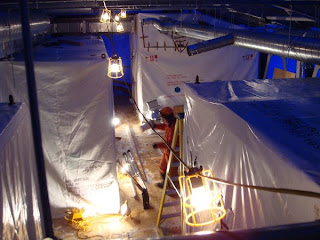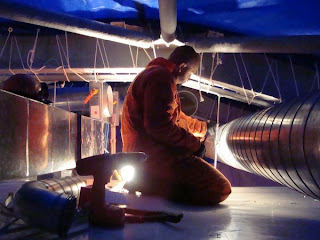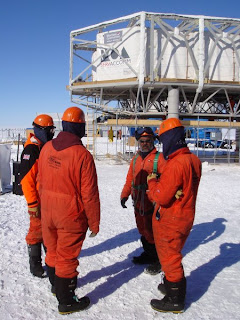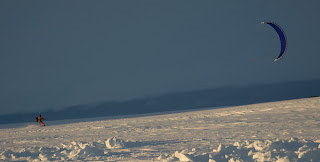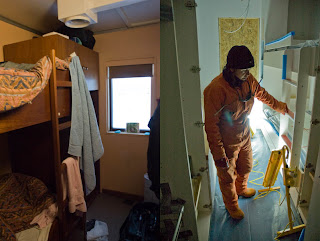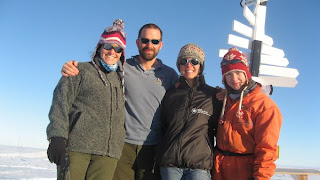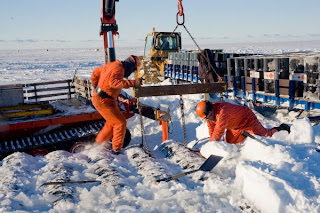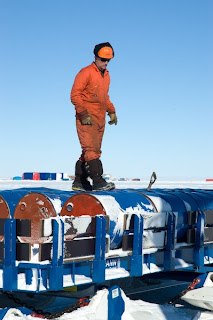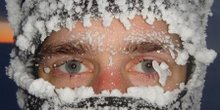Sailing North
Wandering Albatross
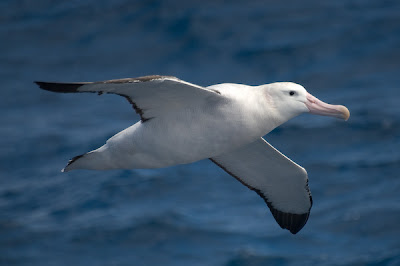
Leaving behind the small clutch of winterers alone on the ice, the Shackleton made good speed through the Stancomb-Wills ice stream, where one of the largest glaciers in Dronning Maud Land meets the sea, creating icebergs as it does so. March is late in the season to be sailing so far South and there was good evidence of sea ice thick enough to walk on for several days sail.
Snow Petrel
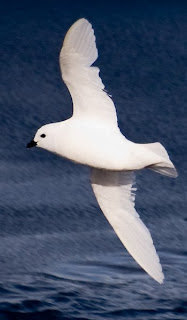
However, a decent storm made the passage easier breaking up the ice and making passage easier. Well, easier in some respects for the winds and rolling seas consigned most of the departing passengers to our bunks.
Another Wandering Albatross

'Our bunks', as for the first time ever I found myself suffering from the intractable nausea that plagues many who sail on the Shackleton, as it corkscrews through the Southern Ocean; the shape of its ice-strengthened hull predisposes it to an unpleasant rolling motion. I never had a problem on the long sail South even during the longer period we spent sailing between the sub-Antarctic islands; I suspect I will have more sympathy in future.
Frozen Winch Gear
With it well below zero sea spray freezes across the ship
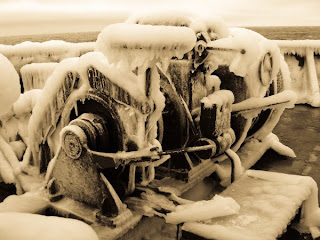
After a few days of rough weather- during which I struggled to help with the indent of the ship's surgery before it sails into the North Sea for its summer work- the skies cleared, the wind dropped and albatross appeared trailing behind the ship.
Diomedea exulans- Wandering albatross
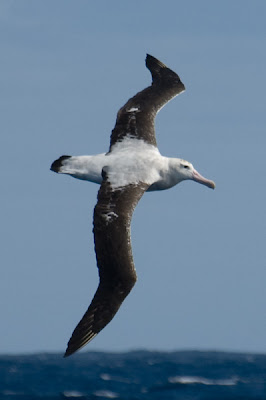
Its difficult to capture photographically just how large the Wanderers are, they have the greatest wingspan of any bird on earth, ranging upward from 10 - 12 foot across and watching them, they seem to soar for ever, without once beating their wings.
Yet More Albatross


Leaving behind the small clutch of winterers alone on the ice, the Shackleton made good speed through the Stancomb-Wills ice stream, where one of the largest glaciers in Dronning Maud Land meets the sea, creating icebergs as it does so. March is late in the season to be sailing so far South and there was good evidence of sea ice thick enough to walk on for several days sail.
Snow Petrel

However, a decent storm made the passage easier breaking up the ice and making passage easier. Well, easier in some respects for the winds and rolling seas consigned most of the departing passengers to our bunks.
Another Wandering Albatross

'Our bunks', as for the first time ever I found myself suffering from the intractable nausea that plagues many who sail on the Shackleton, as it corkscrews through the Southern Ocean; the shape of its ice-strengthened hull predisposes it to an unpleasant rolling motion. I never had a problem on the long sail South even during the longer period we spent sailing between the sub-Antarctic islands; I suspect I will have more sympathy in future.
Frozen Winch Gear
With it well below zero sea spray freezes across the ship

After a few days of rough weather- during which I struggled to help with the indent of the ship's surgery before it sails into the North Sea for its summer work- the skies cleared, the wind dropped and albatross appeared trailing behind the ship.
Diomedea exulans- Wandering albatross

Its difficult to capture photographically just how large the Wanderers are, they have the greatest wingspan of any bird on earth, ranging upward from 10 - 12 foot across and watching them, they seem to soar for ever, without once beating their wings.
Yet More Albatross

I was very fortunate to visit one of their breeding sites, at Bird Island, South Georgia, on the way South, where amongst part of the BAS station's research work is the long-term monitoring of their numbers. Sailing north as we were to Cape Town, we were a long way from any islands yet albatross will quite happily travel across the whole length of the Southern Ocean without touching land.
Light-Mantled Sooty Albatross
Wanderers were not the only birds to follow us north
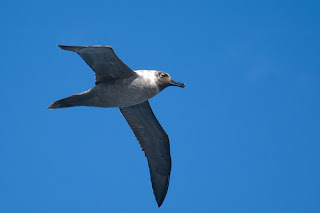
Unfortunately, of the 21 albatross species, 19 are considered threatened, the Wanderers particularly are vulnerable with only 8,000 breeding pairs, many of which nest on Bird Island. One of the greatest threats comes from long-line fishing, where trawlers trail long baited and hooked lines, which unfortunately attract not only fish but also a large variety of birds- often fatally. For more information about the threat to these spectacular birds and what can be done to protect them- Save The Albatross.
Evening Light Catches The Wanderer
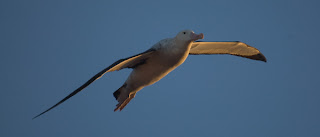
'And a good south wind sprung up behind;
The Albatross did follow'
I am not enough of an aficionado to tell whether all these photos are of the same albatross or whether over the several days that they hovered comfortably over the stern of the ship, we were visited by several different birds. As we headed north, circuit training on the ships heli-deck was made all the more unusual by the bird's presence overhead.
Even More Albatross
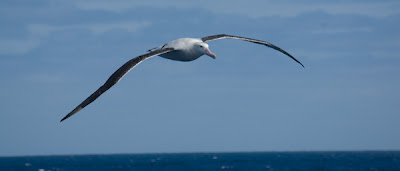
I have been away for 18 months now and it has been a fantastic period of time and I have learnt and done a lot, some of which is already making the news. (The photographs might be similar to some of those on this blog). As South Africa approaches so the temperatures rises and the Antarctic seems far behind. With Cape Town my job comes to an end and with it this blog. It will be a few weeks yet before I am back in the UK, as I am going to have a short holiday but I look forward to seeing everyone- for regardless of the material and slightly less tangible things that I have missed (which includes rain), it is friends and family that I have missed the most.
The Moon

I have been incredibly privileged to work somewhere so incredibly beautiful and untouched by man. I only hope that we can continue to protect and preserve the Antarctic as one of the last great wildernesses. However, the effects of climate change are already all too visible and that will ultimately be detrimental not only to the Antarctic but across the globe. We, as individuals, need to take responsibility for that now before it is too late.
Cape Town
My final destination
Cape Town
My final destination


